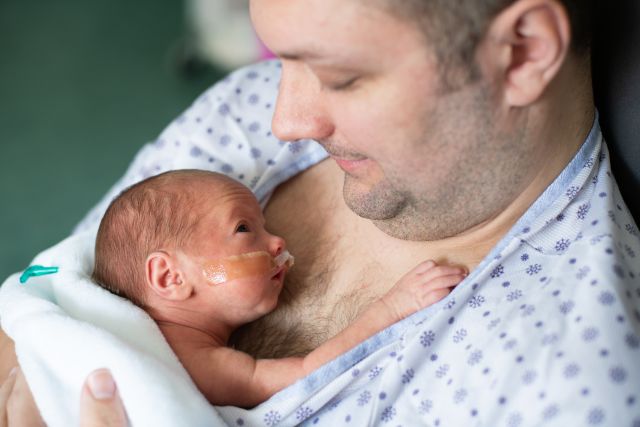Updated on December 3, 2024.
Tetralogy of Fallot is a rare congenital heart defect that occurs in about one out of every 2,077 babies each year in the United States. Congenital means it’s present when a baby is born, rather than developing later. Here’s what you need to know about this rare but serious heart condition.
What is tetralogy of Fallot?
The condition involves a combination of four different heart abnormalities, all of which affect the heart’s structure.
These defects include:
- A hole between the ventricles (the left and right chambers) of the heart
- An artery coming out of the right ventricle that’s too narrow
- An aorta (artery) that’s not positioned correctly
- A right ventricle (heart chamber) that’s working way too hard, so it becomes thicker than it should be
These defects disrupt the flow of oxygen in the blood, which can cause serious health issues. These issues may include infections in the layers of the heart, irregular heartbeats, fainting, dizziness, or seizures, and delays in normal development and growth.
How is tetralogy of Fallot diagnosed?
Before a baby is born, some prenatal tests may detect signs of the condition. If a regular check-up ultrasound seems to show signs of tetralogy of Fallot, a healthcare provider (HCP) may conduct a fetal echocardiogram. It’s an ultrasound specifically of the baby’s heart. It can show details of how the heart is structured and how it’s functioning.
When a baby is born with this condition, they often display cyanosis, or a bluish tint to their skin. Sometimes this will be obvious as soon as they’re born. But in other cases, they may only develop episodes of blue-tinted skin (called “tet spells”) when they’re feeding or crying. The first noninvasive test an HCP will likely perform to examine this is a pulse oximetry. It measures how much oxygen is in the blood.
In addition to the pulse oximetry test, an echocardiogram, or ultrasound of the heart, is the main test an HCP normally uses to confirm the diagnosis. Other tests that might be performed include a chest x-ray, magnetic resonance imaging (MRI) of the heart, or a cardiac catheterization. That’s when a tube is inserted into a major blood vessel to approach the heart.
What is tetralogy of Fallot with pulmonary atresia?
If you’re a long-time fan of late-night television host Jimmy Kimmel, you may recall the opening monologue of a May 2017 show when he tearfully revealed that his newborn son Billy had been diagnosed with tetralogy of Fallot with pulmonary atresia.
This type of tetralogy of Fallot occurs when one of the heart valves that come out of the baby’s heart doesn’t properly form. That means blood isn’t able to travel from the heart to the lungs to pick up oxygen in the typical way. Instead, blood flows to the lungs via other routes in the heart and arteries. These routes within the heart and arteries are critical to the baby’s growth in the womb and they usually close up after birth.
As in Billy’s case, all children diagnosed with tetralogy of Fallot will need surgery to correct the problem. The type of surgery required depends on the details of the condition.
Who is at risk of tetralogy of Fallot?
There are usually no known causes for tetralogy of Fallot. Heart defects can occur in newborns sometimes because of a combination of genes or chromosome changes. They may also stem from what the baby’s mother was exposed to through her environment, food, drink, or medications.
Treating tetralogy of Fallot
Open-heart surgery, also known as a full repair surgery, is needed to correct the issue. During intracardiac repair, the surgeon works to close the hole between the lower chambers of the heart and repair or replace the defective valve that runs between the heart and the lungs. In most cases, all the needed fixes can be made during one single surgery.
In some cases, a baby will need several operations, including temporary shunt surgery, which typically involves creating a bypass, or shunt, between a large artery that branches off from the aorta and the pulmonary artery that sends blood to the lungs.
While outcomes for people with tetralogy of Fallot are generally good, patients will need follow-up care throughout their lives to keep track of any potential complications from surgery and other treatment.







